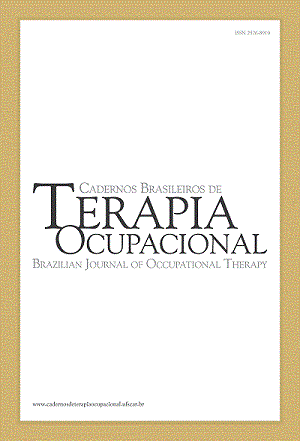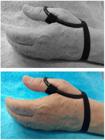Abstract
Introduction
Ligament laxity associated with mechanical stress on the trapeziometacarpal joint of the thumb is considered the main factor to predispose to rhizarthrosis.
Objective
To evaluate the effect of using an orthosis made in a 3D printer associated with an occupational therapy rehabilitation program on pain, grip strength, and forceps of people with rhizarthrosis - stage I and II.
Method
Case series study that used the instruments: Jammar® dynamometer, Preston Pinch Gauge, Visual Analog Pain Scale, and the Quebec User Evaluation of Satisfaction with Assistive Technology questionnaire. Participants underwent 14 Occupational Therapy sessions, twice a week and continued use of the orthosis.
Results
4 women and 2 men participated. They married (50%), complete higher education (50%), right-handed (83%) with a mean age of 54.3 (SD12.01). The results showed that the pain, measured by the VAS, improved for 5 (83.3%) participants since before the treatment the pain ranged from 3 to 10 and after from 0 to 6. The pulp forceps improved in 5 cases, the tripod clamp and handgrip improved in 4 cases and the lateral clamp improved in 2 cases. All users stated that they were satisfied with the orthosis and with the services offered and highlighted: “ease of use”, “monitoring services” and “comfort”.
Conclusion
The use of orthosis made in a 3D printer associated with occupational therapy treatment proved to be effective in relieving pain, improving strength, and satisfying those affected by rhizarthrosis.
Keywords:
Arthropathies; Orthopedic Devices; Occupational Therapy

 Thumbnail
Thumbnail
